Editor’s note: The following is extracted from Names and Their Meaning, by Leopold Wagner (published 1893). All spelling in the original.
Hotel is a French term, derived from hostil, a lordly house, a palace. The designation Public House, signifying a house of public resort for refreshment and conviviality, is a modern substitute for Tavern, derived from the Latin taberna, a hut, a wooden booth; frequently also for Inn, or rather, as originally written, Inne, which expressed the Anglo-Saxon for a mansion. And here we may at once observe that by far the majority of our mediæval inns and Hostelries [see Hotel] grew out of the mansions of the nobility during the prolonged absence of their owners. At such times the privilege of utilizing the mansion for his own profit naturally fell to the family’s most trustworthy dependent, viz., the head gamekeeper, whose green costume gave existence to the sign of The Green Man, when, after quitting the family’s service, he set up an inn on his own account either in connection with his own cottage or abutting on the public highway. Nevertheless, this sign had nothing in common with that of The Green Man and Still, expressive of a herbalist bringing his herbs to a distillery, and which was doubtless the sign of a herbalist turned innkeeper.
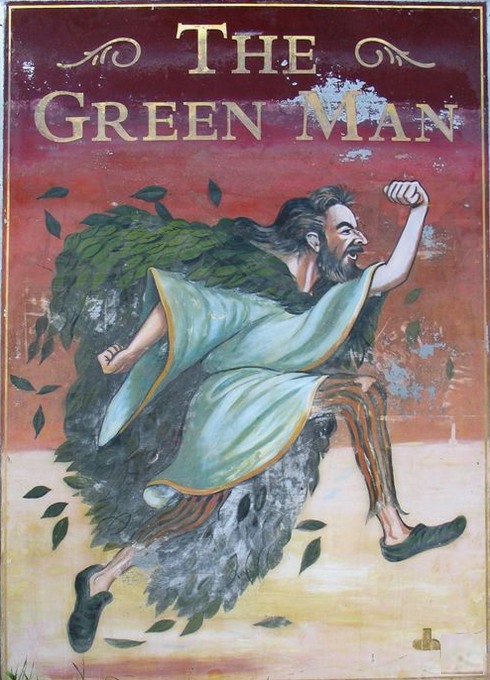
As the family arms always occupied a prominent position on the front of the mansion these soon became known far and wide, though scarcely in accordance with their full heraldic significance. Briefly, the most conspicuous object in them sufficed to impress itself upon the minds of travellers as the distinguishing sign of the establishment; so that, instead of speaking of lions gules and lions azure, &c., they simplified matters by referring to red and blue lions, &c. Such was the origin, then, of The Red Lion, The Blue Lion, and many another familiar sign of this character. Moreover, as a variation of the same device entered into the arms of different families, it happened that the most conspicuous object in them became popular in different parts of the country at the same time. Another fruitful source of the rapid multiplication of a particular sign throughout the same county, and even upon the same estate, was the fact that as often as a retired dependent of a nobleman’s family turned innkeeper, he was pretty certain to name his establishment in accordance with the popular description of the original inn or mansion. If it chanced, however, that that sign had already been appropriated by another innkeeper in the immediate vicinity, the full cognizance of the ground landlord was adopted. Thus, in the Midland Counties there is no sign so common as The Bear and Ragged Staff, which was the cognizance of the Earl of Warwick, the King Maker. Similarly, The Boar’s Head was the cognizance of the Gordons; The Black Bull, that of the House of Clare; and The Talbot, that of the House of Shrewsbury. Another oft-to-be-met-with sign is The Chequers, which comprised the arms of the Earls of Fitzwarren who, in the time of the Plantagenets, held the right of granting the vintners their licences. Later in our history the same cognizance was adopted by the Stuarts. As every one is aware, The Red Rose was the recognized badge of the Lancastrians, and The White Rose that of the Yorkists. It may be assumed that these two signs were naturally more popular throughout the country at large during the Wars of the Roses than at any subsequent period. During that turbulent period of English history, too, the devices of the several adherents of the rival houses were not unfrequently chosen in commemoration of a particular event; as, for example, after the Battle of Barnet, when The Star, the badge of the Earl of Oxford who decided the fate of that day, sprang up as an inn-sign in all directions, except, of course, upon Yorkist ground.
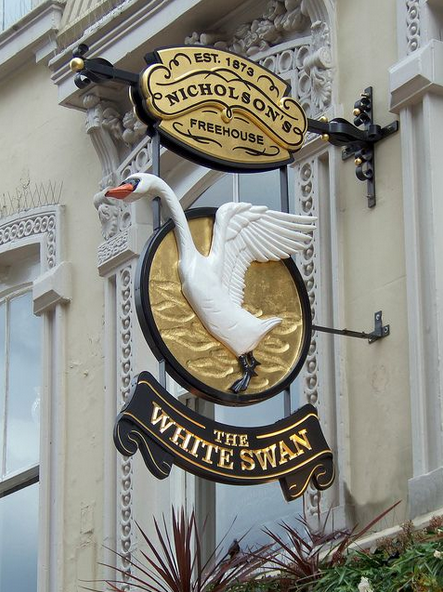
Where the innkeeper was not bound by any ties of gratitude or regard to the ground landlord he evinced his loyalty to the reigning monarch by adopting a portion of the royal arms. As examples of this class:—The White Swan was the badge of Edward III and of Henry IV; The White Swan and Antelope, of Henry V; The White Hart, and The Sun, both of Richard II; The White Lion, of Edward IV as Earl of March, and The Three Suns, of Edward IV as King of England; The Eagle, of Queen Mary; The Blue Boar, of Richard III; The Red Dragon, that of Henry VII, chosen for his standard after the Battle of Bosworth Field, and The Greyhound, his original badge as King. The Rose is the symbol of England, just as The Thistle stands for Scotland, The Shamrock for Ireland, and The Leek for Wales. A very general expression of loyalty, again, was conveyed in the sign of The Crown, which, by the way, was shrewdly complimentary to the reigning house without offering offence to the partisans of a rival claimant to the throne. The Rose and Crown had reference originally to the union of the red and white roses in the House of Tudor by the marriage of Henry VII with Elizabeth, the daughter of Edward IV, in the year 1486; The Crown and Sceptre must have originated in the mind of one who had been witness to the elaborate ceremonial peculiar to a coronation; while The Crown and Anchor signified the reliance which was placed in the exalted person that wore the crown.
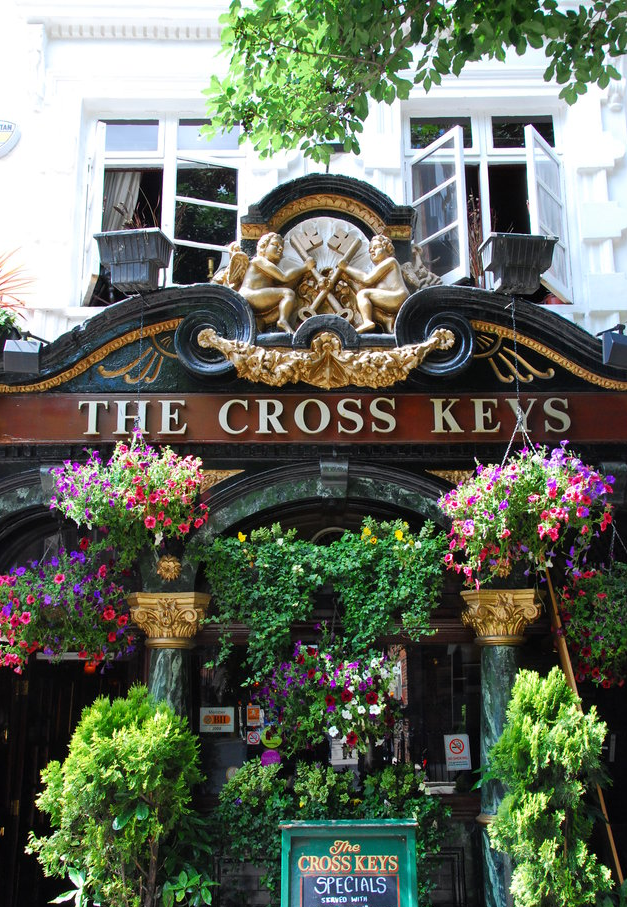
If, on the other hand, our mediæval innkeeper chose to flatter the ground landlord without actually adopting his cognizance, he invariably named his establishment after his lordship’s family title, e.g., The Earl of March, in compliment to the Duke of Richmond, or else set up some such sign as The Hare and Hounds, The Tally Ho!, The Fox in the Hole, &c., in allusion to the sporting tastes of his patron. At times he even went so far as to enter into the religious enthusiasm of the latter by exhibiting a preference for The Angel or The Salutation, both referring to the Annunciation of the Virgin; The Three Kings, meaning the Magi who presented themselves to the Infant at Bethlehem; or The Cross Keys, the symbol of St. Peter, and the badge of the Archbishop of York. The sign of The Mitre was generally adopted by an innkeeper whose establishment stood in the vicinity of a cathedral; consequently, this particular sign abounds in cities, but is rarely to be met with in the rural districts.
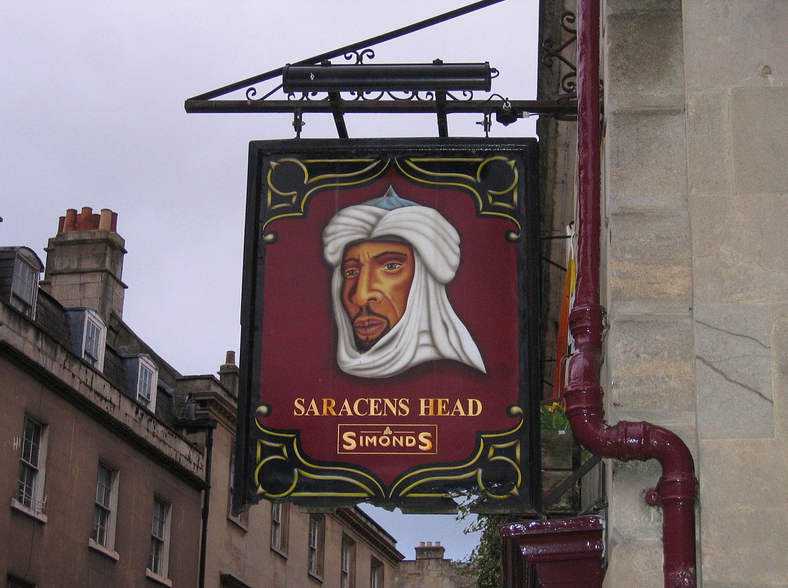
During the period of the Holy Wars, if the innkeeper did not content himself with the sign of The Turk’s Head or The Saracen’s Head, that of The Golden Cross, which was the ensign carried by the Crusaders, was usually chosen. The modern sign of The Half-Moon originated in the crescent, the ensign of the Infidel. The signs of The Swan, The Pheasant, and The Peacock arose in the days of knight-errantry, when every knight selected one of these birds as an emblem of chivalry, and exerted a pride in the association. For example, one of the principal characters in the “Niebelungen Lied” is called “The Knight of the Swan.” Then, again, many innkeepers assumed a sign in honour of the patron saint of England, or in commemoration of his combat with the dragon, viz., The St. George, The St. George and Dragon, The George and Dragon, The Green Dragon, &c. The George, a common sign enough in our own day—it would be difficult to name a town that has not its “George” in the High Street—was originally connected with the dragon too; but at the commencement of the Hanoverian succession the heraldic device was painted out altogether, and the words The George were put up in its place. The like observation applies to all such signs as The King’s Arms, The Queen’s Arms, The Freemasons’ Arms, The Coachmakers’ Arms, The Saddlers’ Arms, The Carpenters’ Arms, &c., nowadays identified by name only, instead of their distinctive badge or crest. We must not omit to mention also that, since the especial function of tavern and other signs was to call attention to the character of an establishment in days when the people were unable to read, and when, therefore, the display of the owner’s name or of the name of the house would have been useless, the misapprehension of the painted device was of common occurrence. Hence the corruption of many signs from their original meaning.
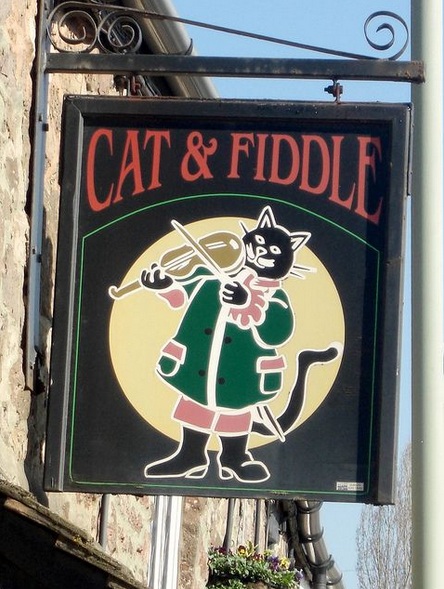
Perhaps the most glaring instance of this kind originated in the sign of The Garter, or the insignia of the Order of the Garter represented in its proper position on a leg (whence we have the intelligible sign of The Star and Garter); yet the vulgar mind quite failed to grasp the idea, with a result that a house exhibiting this sign was invariably referred to as The Leg and Star. Corruptions of a different character are of later date, when the name of the house instead of the device began to make its appearance on an innkeeper’s signboard. Chief among these are:—The Cat and Fiddle, a perversion of “Caton le Fidele,” in honour of Caton, the faithful Governor of Calais; The Bag o’ Nails, of “The Bacchanals,” in reference to Pan and the Satyrs; The Goat and Compasses, of the Puritan motto “God encompass us”; The Iron Devil, of “The Hirondelle,” or swallow; The Bull and Mouth, and The Bull and Gate, of “The Boulogne Mouth” and “The Boulogne Gate,” in compliment to Henry VIII., who effected the siege of Boulogne and its harbour in 1544; The Lion and Key, of “The Lion on the Quay,” meaning a house bearing the sign of The Lion, and situated by the water-side, in order to distinguish it from other Lions in the same port; The Cat and Wheel, of “The Catherine Wheel,” the instrument of St. Catherine’s martyrdom; The Plume and Feathers, of “The Plume of Feathers,” in allusion to the Prince of Wales; The Bully Ruffian, of “The Bellerophon,” the vessel on board of which Napoleon surrendered his sword to Captain Maitland after his defeat at Waterloo; and The Blue Pig, a mere modification of “The Blue Boar.” The Pig and Whistle is a very old sign, the term whistle being a corruption of “wassail,” and pig, the Old English for a bowl or cup. Surely there could be no more fitting sign for a tavern than that which suggested the drinking of healths!
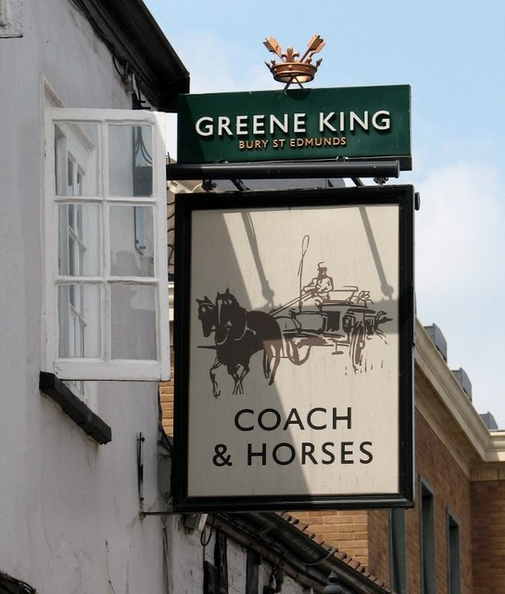
The original character of many of our country inns is at once indicated by their signs. Thus, The Coach and Horses was clearly, before the introduction of railways, a coaching establishment; while The Pack Horse announced the fact that pack-horses were let out on hire. Again, The Bear—subject to sundry modifications, such as The Brown Bear, The Black Bear, The Grizzly Bear—informed the frequenters of such resorts that bear-baiting might be witnessed on the premises; exactly as, nearer to our own day, The Dog and Duck called attention to the popular diversion of duck-hunting by spaniels in a pond. The Skittles and The Bowling Green indicated a more rational kind of sport. Once more, The Grapes conveyed the intelligence that a vinery existed in connection with the establishment; whereas The Castle, which constitutes the arms of Spain, The Globe, the arms of the King of Portugal, and The Spread Eagle, the arms of Germany, told that the wines of those respective countries were to be had there. In the north of England the sign of The Yorkshire Stingo is very common, the allusion being to an old beer of particular strength and sharpness for which the county of York has won considerable celebrity.
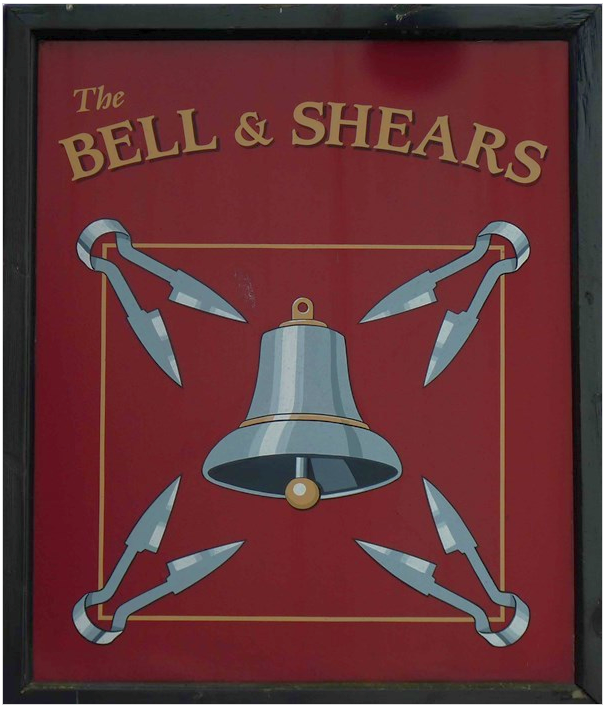
Among other familiar country inn and tavern signs may be mentioned The Bell, referring to the silver bell that formed the prize at races previous to the Restoration; The Barley Mow, denoting the premises where the barley was housed, mowe being the Saxon term for “a heap”; and The Old Hat, which in the olden time may have been the shop of a hatter rejoicing in the sign of “The Hat,” and subsequently converted into a place of refreshment. Another distinctly tradesmanlike sign is The Ram and Teazle, which was originally chosen in compliment to the Clothiers’ Company; the lamb with the golden fleece being emblematical of wool, and the teazle, a tool used for raising the nap of the wool when woven into cloth. The Bricklayers’ Arms merely indicate a house of call for bricklayers; while The Cricketers’ Arms derives its title from a neighbouring cricket-ground. The significance of The Tankard, The Bottle, and similar signs, need not detain us. We may, however, state that The Black Jack refers to a leathern pitcher for holding beer, which took its name from the defensive breastplate of strong leather formerly worn by horsemen, and known as a Jacque, whence the term Jacket has been derived.
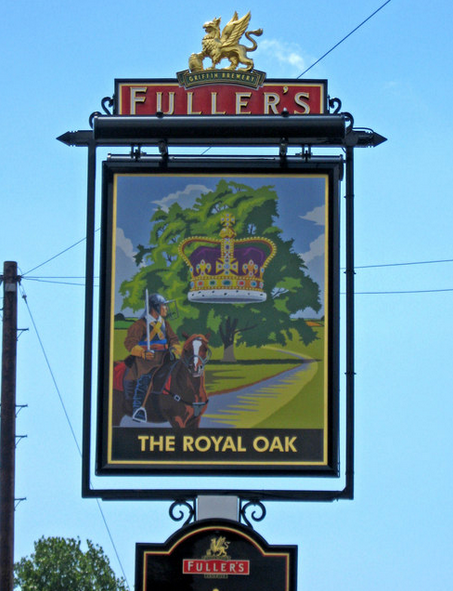
Signs that betray a political bias, such as The Royal Oak, The Boscobel, The Jacobite, The Hanover, &c., are altogether too numerous to mention. In the early part of the present century, too, the names of political leaders were largely drawn upon as an attraction for tavern signs, as were those also of distinguished naval and military commanders, and of the battles won by them. The Canning, The Palmerston, The Nelson, The Wellington, The Marquis of Granby, The Portobello Arms, The Trafalgar, The Waterloo, and a host of others of the like character, are everywhere to be encountered; while the old sign of The Ship carries us back to the days of Elizabeth, when the circumnavigation of the globe by Sir Francis Drake was regarded as an exploit that could scarcely be too highly honoured.
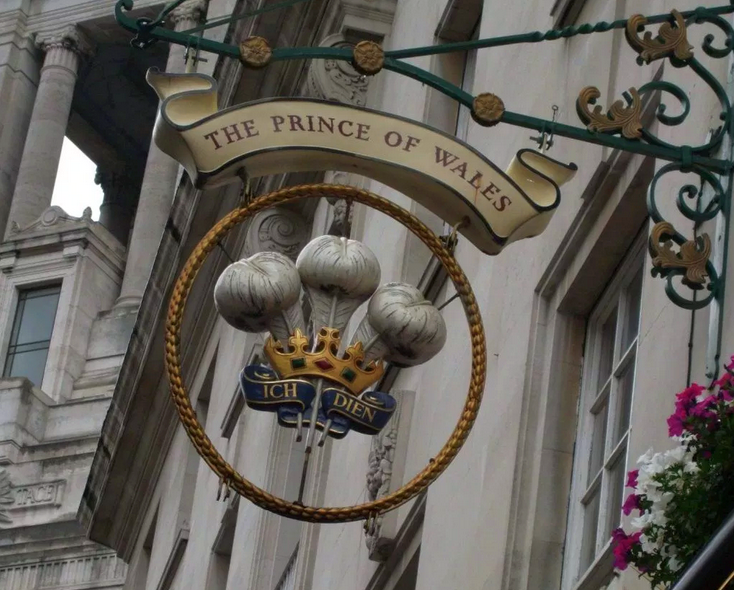
Before concluding, let us add a few words of comment upon the signal loyalty of the English people in the times we live in; for whereas our forefathers were for the most part content to express their loyalty to the throne by the choice of such vague tavern signs as The King’s Head, or The Queen’s Head, we of the nineteenth century are not nearly so half-hearted. Not only are The Victoria, The Prince Albert, The Prince of Wales, and The Prince of Wales’ Feathers honoured on every hand in the course of a day’s perambulation, but The Duke of Edinburgh, The Duke of Cambridge, The Duke of Connaught, and other members of the Royal Family, are similarly memorialized. Perhaps in the future, when the Prince of Wales shall occupy the British Throne, his descendants may also in their turn form the subject of many a tavern sign in our midst.
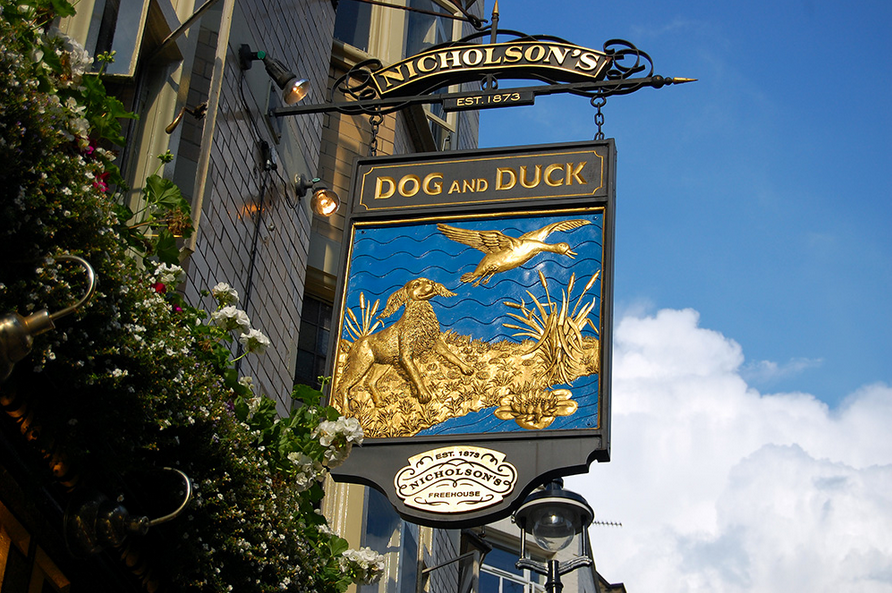

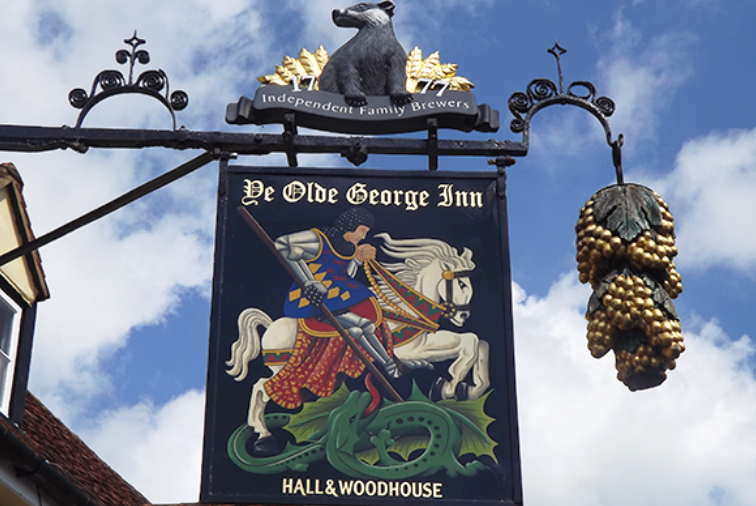








5
That was awesome.
Very interesting!
And now I also know why we call that part of a barn the “hay mow”. Excellent!
[…] (Men of the West): Hotel is a French term, derived from hostil, a lordly house, a palace. The designation Public […]
Well damnit. Now gonna have to figure out the time to make one of these things and put it in front of the house. Already stole and modified the concept from a record company of the estate: “Fat Possum Farms – It ain’t great…but I’m trying”
Got any artists in the house that would be willing to sketch a concept? I can work with wood all day…but the artistry escapes me at the start.
Shoot me an email. I got an ‘in-house” artist.
5